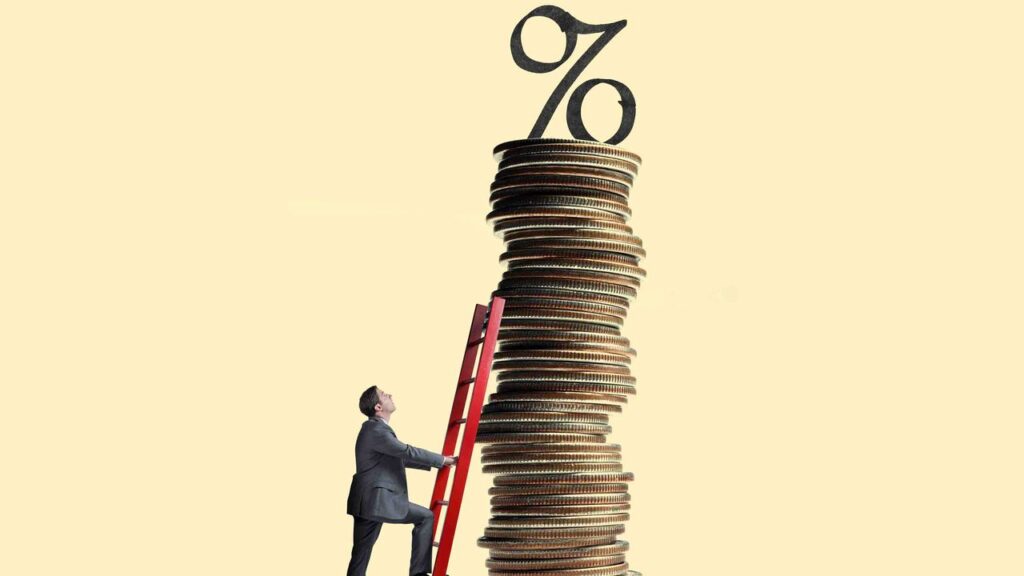After the Federal Reserve’s rate cuts in late 2024, Treasury yields have unexpectedly climbed. What’s driving this counterintuitive trend?

Key Takeaways
- – Historically, rate-cutting cycles lead to lower Treasury rates, but this time is different.
- – A strong economy and uncertainty surrounding Trump administration policies have reignited inflation concerns.
- – Following a cumulative 100-basis-point (bps) rate cut between September and December 2024, the Fed is now pausing further cuts.
A Counterintuitive Market Reaction
In September 2024, the Federal Reserve made headlines with a 50-bps cut to the federal funds rate, signaling that inflation was finally under control. That move was followed by additional 25-bps cuts in both November and December.
Historically, rate cuts lead to lower Treasury yields. Yet since that initial September cut, Treasury rates have moved in the opposite direction—steadily climbing, with the 10-year Treasury yield rising by over 100 bps as of mid-January 2025.
Why are long-term rates surging despite the Fed’s efforts to lower them? Several factors set this cycle apart from previous ones.
1. No Economic Crisis to Justify Aggressive Rate Cuts
In past rate-cutting cycles, the Fed has typically acted in response to economic slowdowns or crises. For example:
| Crisis Event | Rate Cut Period | Federal Funds Rate (%) | 10-Year Treasury Rate (%) |
|---|---|---|---|
| COVID-19 | Feb–Apr 2020 | 1.75 → 0.25 | 1.15 → 0.64 |
| Global Financial Crisis | Nov 2007–Jan 2008 | 4.25 → 3.00 | 3.94 → 3.60 |
| Dotcom Bust | Nov 2000–Jan 2001 | 6.50 → 5.50 | 5.47 → 5.11 |
Unlike these periods, today’s economy remains resilient, making aggressive cuts less necessary.
2. Economic Strength Keeping Rates Elevated
The U.S. economy remains robust, with key indicators showing continued strength:
- – Over 2 million jobs were created in 2024.
- – The December unemployment rate stood at 4.1%, well below historical averages of around 6%.
- – GDP growth is projected between 2.8% and 3.0%, aligning with long-term trends.
- – Retail sales surged 3.8% in November.
- – Personal income increased 2.64% year-over-year in November 2024.
With unemployment low and consumer spending strong, there’s little reason for Treasury yields to drop significantly.
3. Inflation Concerns Are Reemerging
The Fed has successfully reduced inflation from a peak of 9.1% in June 2022 to 2.7% in November 2024. However, the last stretch toward the Fed’s 2% target has proven challenging.
- – Core CPI (excluding food and energy) has remained stuck at 3.2–3.3% for the past six months.
- – Political developments, including Trump’s election victory and a Republican-controlled Congress, have added uncertainty.
- – Proposals for new tariffs and immigration policies, combined with potential tax cuts and deregulation, could reignite inflationary pressures.
4. Rising Federal Debt and Market Uncertainty
The U.S. national debt reached $36 trillion at the end of 2024, with projections of an additional $3–$7 trillion in borrowing over the coming years. Higher debt levels often lead to rising yields as investors demand greater compensation for lending to the government.
Since the 2024 presidential election:
- – 10-year Treasury yields rose 30 bps through year-end.
- – An additional 50-bps increase occurred by January 10, 2025.
Why Cut Rates at All?
Between March 2022 and July 2023, the Fed aggressively hiked rates from 0% to 5.50%—the fastest increase since the 1980s. As inflation cooled, the Fed opted to ease off the gas pedal, ensuring policy didn’t become overly restrictive.
Yet after three rate cuts totaling 100 bps, Fed officials are signaling caution moving forward. With inflation risks still present, further cuts are unlikely in the near term.
A Shift to Neutral Policy
Rather than a typical rate-cutting cycle aimed at stimulating a weak economy, the Fed’s recent actions should be viewed as a shift toward policy normalization. Investors initially expecting lower rates may have been surprised, but given continued economic strength and renewed inflation risks, a higher-rate environment makes sense.
